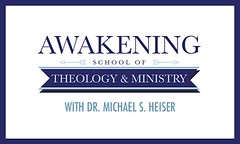The startling account of the unholy alliance of Adolph Hitler and Germany's great chemical combine
 I.G. Farben was a German chemical industry conglomerate. Its name is taken from Interessen-Gemeinschaft Farbenindustrie AG (Syndicate [literally, "community of interests"] of dye-making corporations). The company was formed in 1925 from a number of major chemical companies that had been working together closely since World War I. During its heyday I.G. Farben was the largest chemical company in the world and the fourth largest overall industrial concern, after General Motors, U.S. Steel and Standard Oil (New Jersey).
I.G. Farben was a German chemical industry conglomerate. Its name is taken from Interessen-Gemeinschaft Farbenindustrie AG (Syndicate [literally, "community of interests"] of dye-making corporations). The company was formed in 1925 from a number of major chemical companies that had been working together closely since World War I. During its heyday I.G. Farben was the largest chemical company in the world and the fourth largest overall industrial concern, after General Motors, U.S. Steel and Standard Oil (New Jersey).
I.G. Farben was involved in numerous war crimes during World War II. It was seized by the Allies in 1945 and liquidated in 1952. It still nominally exists as an asset-less shell, with the stated goal of paying restitution to the victims of its many crimes in the form of compensation and reparations.
Friday, September 28, 2012
The Crime and Punishment of I.G. Farben by Joseph Borkin
Available at Amazon.com
Posted by
Steve McHenry
at
3:00 PM
0
comments
![]()
Labels: Book, Conspiracy, Secret
Saturday, September 15, 2012
The Epworth Phenomena: Paranormal Experiences From The Journal Of John Wesley
It is fairly certain that Galileo never said, "It moves, for all that," and that Wellington never said, "Up, Guards, and at 'em!" And one humorous writer has proved that Napoleon never existed, so perhaps Waterloo was never fought, and no enemy there for the Guards to be up and at. History, in short, is an uncertain affair. It depends on fallible human testimony; and though most of us are agreed on the principal points, even these cannot be coercively proved, and from them there spreads a region of ever-increasing dimness, where many things are lost, all outlines are indistinct, and illusions and false perspectives abound. Who was the Man in the Iron Mask? Was William Rufus murdered, or killed accidentally? Did Branwell Bronte make love to his employer's wife? Did D. D. Home really float out of one window and in at another? We do not know. How then shall we expect to know exactly what happened in the parental home of John Wesley two hundred years ago, or the exact details of ghost stories and the like that were told him on his travels? No certainty is attainable. Each must judge for himself-or must suspend judgment-and the verdict will depend partly on the evidence, partly on our knowledge or ignorance of similar cases, and partly on our emotional bias if we have any. Anyhow, as John Wesley quaintly says, no great harm will be done "provided those who believe and those who disbelieve . . . have but patience with each other."
Concerning the psychic disturbances of a poltergeist nature at Epworth Vicarage, in 1716 during its occupancy by Rev. Samuel Wesley, father of Methodist Church founder John Wesley. "Most if not all of Wesley's biographers agree that what has come generally to be known as "The Epworth Case" is one of the best authenticated and related instances of supernormal happenings in the history of psychical research. Even Mr. Frank Podmore admits that "this is at once the most fully authenticated case in the literature of the subject and the most instructive for those that read with understanding"; and in Dr Fitchett's opinion "the evidence, if it were given in a court of law, and in a trial for murder, would suffice to hang any man. "

Concerning the psychic disturbances of a poltergeist nature at Epworth Vicarage, in 1716 during its occupancy by Rev. Samuel Wesley, father of Methodist Church founder John Wesley. "Most if not all of Wesley's biographers agree that what has come generally to be known as "The Epworth Case" is one of the best authenticated and related instances of supernormal happenings in the history of psychical research. Even Mr. Frank Podmore admits that "this is at once the most fully authenticated case in the literature of the subject and the most instructive for those that read with understanding"; and in Dr Fitchett's opinion "the evidence, if it were given in a court of law, and in a trial for murder, would suffice to hang any man. "
Available at Amazon and Barnes and Noble
The Epworth Phenomena: Paranormal Experiences From The Journal Of John Wesley
Posted by
Steve McHenry
at
9:00 AM
0
comments
![]()
Subscribe to:
Posts (Atom)









